Why this Missouri designer charges for helping clients nail down their budget
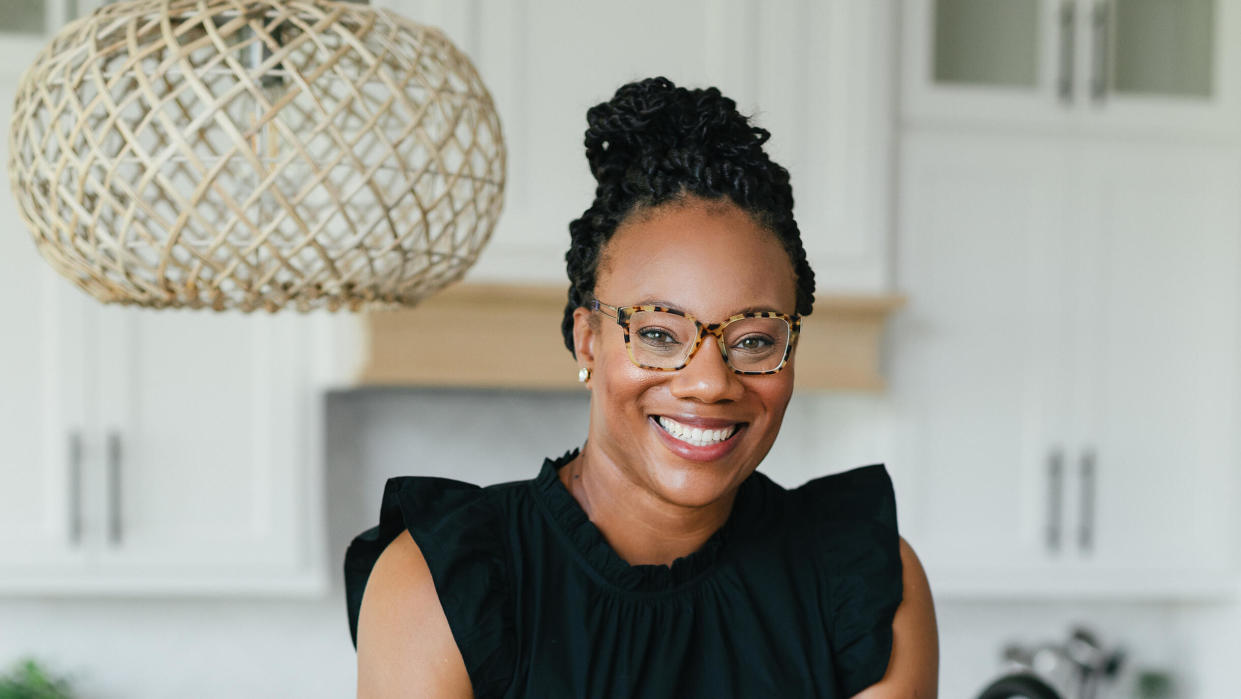
50 States Project | Jul 1, 2023
The 50 States Project is a series of candid conversations with interior designers across the country about how they’ve built their businesses. This week, Kansas City, Missouri–based designer Twyla Elmore of Bleu Grace Designs tells us how she got her biggest client from a lawn sign, how she’s learning not to downplay her value, and why she can’t overstate the benefits of slowing down.
Did you always know you wanted to be a designer?
When I was little, my mother designed a room for every stage of my life. I don’t remember the nursery—I’ve only seen photos of it—but I had a new room when I was three that I sort of remember, and again when we relocated to Kansas City from Louisiana. I got a new room for middle school, and then high school—and every time, it was a big, big deal for me. This wasn’t bed-in-a-bag decorating. She brought in someone to do wallcoverings, or she put up a border; my father was a painting contractor, so I got a new color to go with the custom valances and drapery. She went all out. And along the way, I got very interested and involved in that process because eventually she started asking, “Well, what color do you think we should go with next?”
But as silly as it sounds, I had no idea that this was an actual professional world, and I didn’t know that I could walk in the front door of it. As I got older and learned that interior design was an actual profession, I [still] didn’t know what it meant to be an interior designer, so I always took jobs that were very close to it—for example, I worked in luxury leasing, and then I would say, “Can I do the mini-model apartments? I know how to do that.” I worked as a real estate transaction coordinator, and I would say, “Oh, I can go in and do your staging.” In the beginning, that was my way into the field—however I could get my hands on it, even though I didn’t have the confidence or think that I could actually be in it.
During the pandemic, I had a job at a commercial real estate firm when I got pregnant. But when I had my baby, the job was not so nice about it, and it turned into a really rocky road for me. I had been very committed to that job and very loyal, so I was very hurt when I felt like I was unwanted because of the inconvenience of me having a baby during Covid. I told my husband, “I think this is the season where I am just going to close my eyes, jump all in and figure it out as I go, but I will not stay here. I’m going to spend the rest of my life doing what I want to do.” And so I started Bleu Grace Designs.
That’s amazing—and brave! Had you been doing design work on the side before going all in?
I had. My husband is always my biggest push—always. He believes in me far more than I think I could ever believe in myself. So he would tell people, “Oh, my wife is a really good decorator, so call if you ever need her for anything.” A realtor contacted him and said, “I am building a farmhouse. We’re going to have this big bash at the property, and I’d love it if she could come in and help us fix it up because we don’t know what we’re doing.” That was my first project. I think I did that whole house for like $800.
I had told a co-worker that I love doing children’s spaces and that I was looking for opportunities to get into that part of the business. She called me months and months later and said, “Hey, I’m moving, and I want to surprise my daughter with a new room.” I did that room pro bono just to get the photos, and I think I got a $150 check as a thank you. I did a lot of little things like that—people we knew who needed the help. They weren’t necessarily an ideal client for an interior designer, but they trusted me and allowed me to come in and help them.
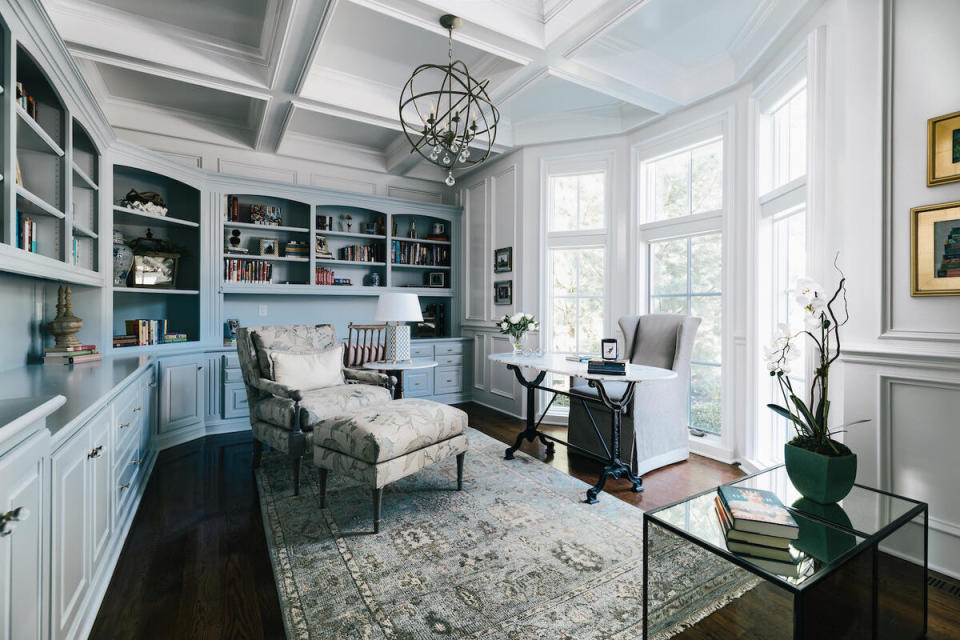
How did you transition to a more formalized business?
That shift came when I was on maternity leave. I contacted someone who had asked me to design an in-home photography studio and said, “You know, I’d like to come over for a consultation to get your project started before I have to go back to work.” I ended up doing her project, and I surprised myself. The photo actually was magazine-worthy—it made it into a [local] magazine. That made me think, “OK, I think I’m good at this. So how do I structure this more like an actual business? What would my systems be? How do I communicate with the client?”
When I took that project, I asked her if I could put a sign in her yard to advertise, and that sign led to a project so large that it forced me to make a decision: to quit my corporate job and follow my dream, or to decline. That one project came on two and a half years ago, and it is still my primary client.
What’s the scope of work for that job?
It started small. They asked if I could come in and do their daughter’s bedroom for her birthday, which was perfect because I wanted to do children’s spaces. And when I got there, it turned into, “Well, we’re going to end up moving her room—can you do our son’s room, and then she can have the larger room? And if we do that, we’re going to have to move the guest room. Can you do all three rooms? What about the bathrooms for those rooms? Could you do our living room then?” And they gave me their whole 9,200-square-foot home.
Oh, my gosh, that’s incredible. But that had to be an overwhelming start, too.
I kept saying, “You guys know I work full-time in commercial real estate, right? I don’t think I’m qualified for this.” But they were like, “We’ve seen your work. We’d love to work with you.” And so I talked to my husband about it, and with a lot of prayer, we decided, let’s run for it. I put in my two weeks’ notice, and I’ve been working with them now for two and a half years.
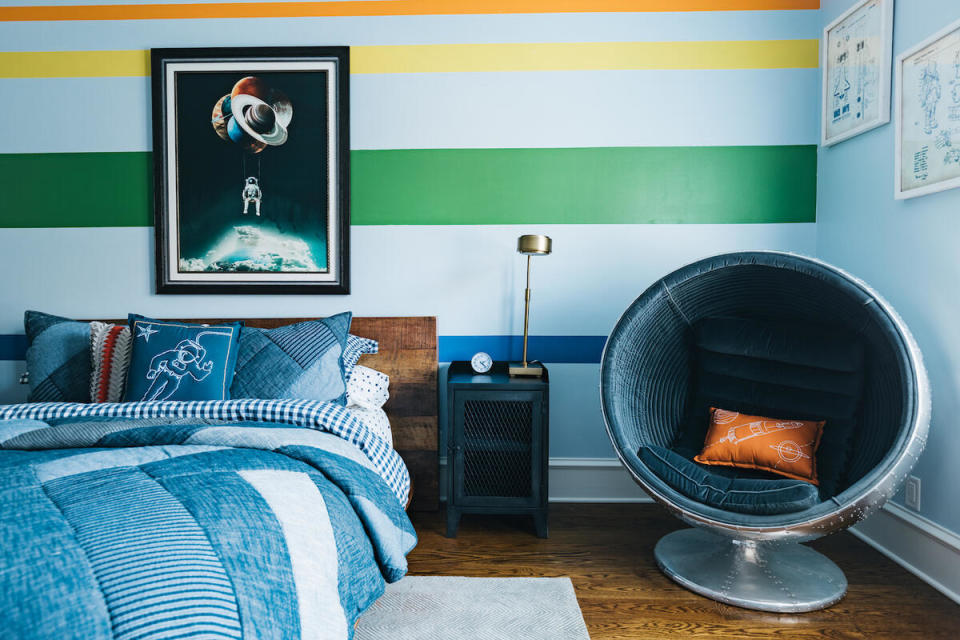
How did you structure your business when you decided you were going to go all in?
I have a lot of previous experience with support roles, during my first job as a sales manager, and then as an assistant several times over—at real estate firms and for entrepreneurs—which gave me a lot of corporate experience, and a lot of executive support experience. I fused all of that know-how into how I assist these clients with getting the project done. I would say, “It’s almost like you’ve hired an assistant to get your living room redesigned.” Taking that approach allowed me to bring in processes that were familiar from the corporate world until I learned more about the business of interior design. Now, I’ve recently started infusing more of those design-specific processes into the work I’m doing.
What are you currently phasing out or in?
I started with just a spreadsheet to manage a project—the client’s information, the budgets, the themes, all this stuff I thought I needed to know to make this project happen. Then I went through the Interior Design Business Academy, a program by a designer named Terri Taylor that helps you adopt her processes. I use Asana now to communicate with my team. I’ve actually hired team members to do certain things for me. I’m starting to build a sample library instead of having to go to the showroom all the time for every little thing. And I use DesignFiles [project management software] now, which I’m horrible at because I’m so used to doing everything manually, but I’m getting better.
Does it feel like it’s a good challenge to work through?
I absolutely can see the light at the end of the tunnel. But I will be very honest and say that some days I do have to remind myself that there’s a light at the end of the tunnel.
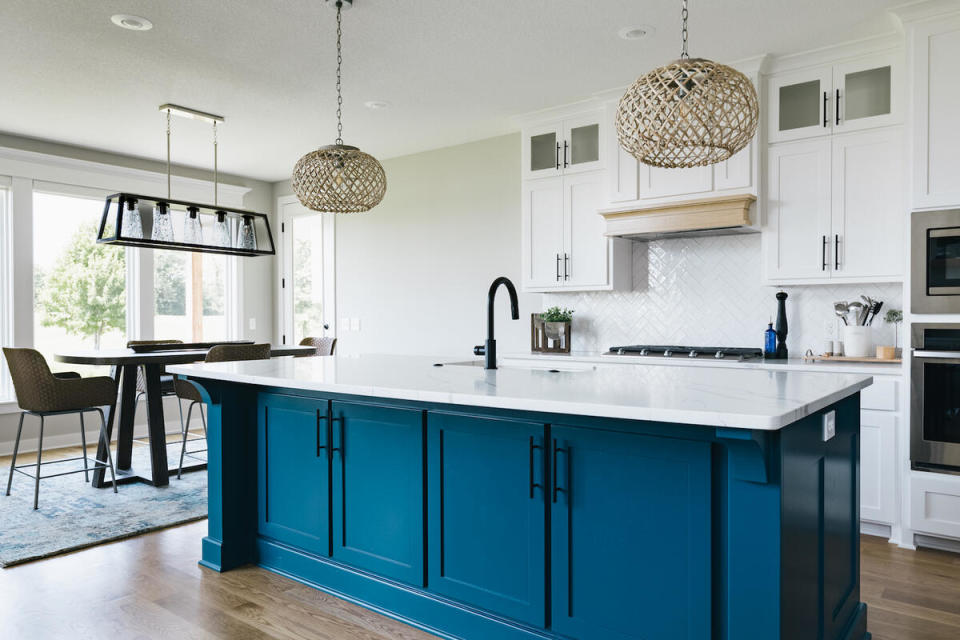
How did you approach billing for your work?
I’m still in the season of defining my value and walking in that, but I am far more confident now in the understanding that I am an actual interior designer. For a long time, I minimized my work because I assumed you had to have a degree to be considered an interior designer. Because I did not have a degree, I hid behind, “Oh, I just style,” or “I’ll just help you decorate”—I did that for a very long time. Once I got this project that took me off my job, I had to learn how to stand square-shouldered and say, “I am an interior designer.” I had to do that in order to service a client of that magnitude, even just to be able to create trade accounts and receive the furniture.
Getting my work printed in a magazine also definitely gave me the confidence to say, “OK, I think I’ve got something here.” And watching other people’s affirmations of my work has definitely helped me see that if other people see so much value in my work, why would I rob myself of that? And when I started to see my work in their home, I could blow myself away. I’d say to myself, “Oh, my gosh, Twyla, you really just did that.” That helped with my confidence about my fees, too.
I started to do a lot of research around how designers charge, and I’m now comfortable charging a design fee upfront. Once I have a clear understanding of the scope of work and a clear, established budget—and I may have to be the one to help you with that budget, and there is a fee for that as well—that’s when I can give you a design fee, which is based on how much time is it going to take to accomplish the scope of work. That fee is for the design, but I’m also accounting for how many contractors I’m going to have to get involved with, and how much management I’ll have to do. Then, as we go through the project, I’m sourcing any materials that are used with my fee attached, which never goes over retail or MSRP.
You mentioned that you charge a fee for helping people figure out their budget. That process is such a pain point for so many designers. How do you walk clients through it?
I want to say first that every fee that a client pays is credited to the next level of work. So when I meet you and have an on-site consultation, there is a fee for that. But if you decide to move forward with me as your designer, that fee is credited to the next phase. The next step is exploratory—if you’re wanting electrical work or plumbing done, I’m not an expert in those fields and we have to bring these guys in to drill down on how much this project is really going to cost. Are our daydreams within budget? There is a fee for that because I’m in your home, working with contractors consistently to figure out what’s possible. Once we’re done with the exploratory phase, if you decide to move forward, then that fee is credited to the design fee.
Are clients receptive to that?
I’ve only had one client who just could not wrap her brain around why she had to pay to figure out the project. Otherwise, I’ve had excellent responses—and what I’ve noticed most consistently is how much clients appreciate that level of clarity upfront. They appreciate knowing what we’re doing, why we’re doing it and what the fees are for. They also appreciate understanding, “OK, so I thought I could do XYZ in my home, but now that I’ve brought in professionals and someone to advocate for me, I’ve realized that I can’t do that. But now I do know what’s possible for me and what it costs.”
Where do you see opportunity for growth?
My biggest focal point right now is thinking about how to make sure I’m nurturing that [new business] pipeline. I’m trying to figure out how much I value marketing and advertising—how much do I need it, and will that support my business in the future? How valuable is my social media platform, and how much effort and spend do we put behind that? Or is this truly just a word-of-mouth business? So far, it’s been consistent based on word of mouth, but I’m ready to grow to four or five projects a year—I’m ready to expand the team and change my role.
What would that expansion look like?
I’m the only designer right now, and then I have a team of contractors—a bookkeeper, an administrator, and I’ve just brought someone on to manage all of our tech support, develop and manage the library, and run errands to take a few things off of my plate. But I want to go past that, and possibly bring on another designer.
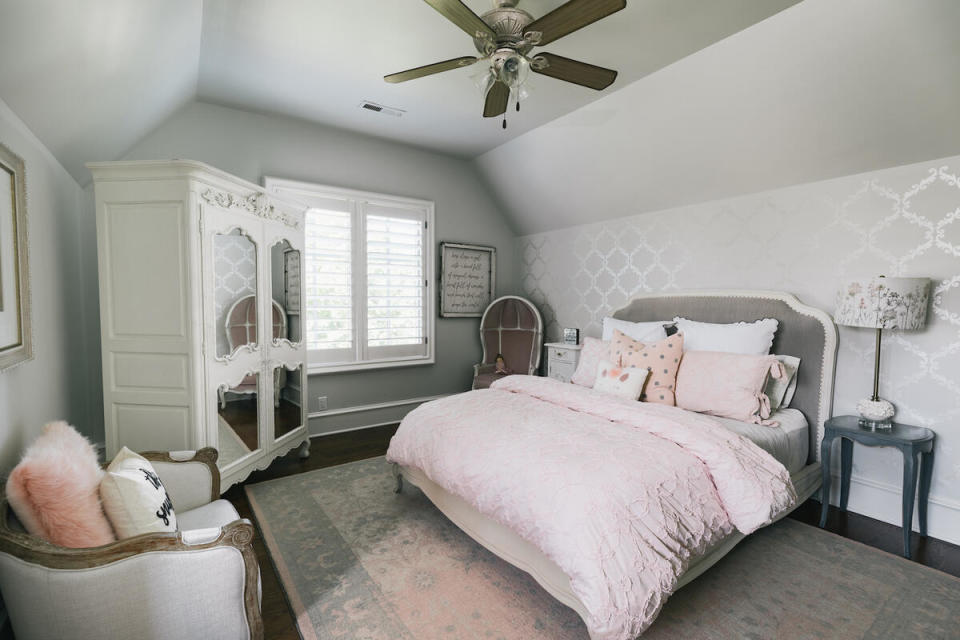
Tell me about the design scene in Kansas City.
I don’t know that this would stand out to others, but because of my background, what draws my eye and what I love is the traditional side of Kansas City, Missouri. I love Tudor homes or brick homes, very traditional homes—rolling, sprawling ranches. I’ll see sparks of modern, but it’s always still laced with so much tradition from a design [standpoint], and I love that.
Right now, I’m doing quite a bit of renovation support. I’ve only done one new build since I’ve started, but I’ve just started working alongside a custom-home builder, and I’m working with his renovation team. Right now, all my projects are million-plus homes, often purchasing an older home, or homes [they’ve been living in that they] want to go in and make their own. My client is pretty consistent in [that they have] a traditional aesthetic—either that or transitional, which can mean so many things, so I try to stay away from the word “transitional.” My main aesthetic is traditional, so that’s what follows me, and that’s what I’m looking for.
What is the biggest thing you know now that you wish you had known when you started your business?
It’s OK to slow down. I have been so busy trying to make sure I keep the client happy, and that I do it in a timely manner, because I’m so used to that executive assistant flow. But I’m learning that it [works] better—and it’s much better for the client—if I just slow down. If I think I’ll get it done in a week, it’s OK to tell them I’ll get it done in two weeks instead of putting pressure on myself or trying to work a little too quickly.
How has acknowledging that shaped your workflow?
Well, I think I’m just now starting to acknowledge it. But it’s allowing me to take better control of my calendar, plan ahead and watch what promises come out of my mouth. I’m pretty big on underpromising and overdelivering, so if I’ve already promised an awful lot and then I want to overdeliver, I am wearing myself thin. It’s just brought a lot more awareness to how I communicate, what I say, and giving deadlines that allow me to manage an entire business. I’ve just started really walking into the awareness of, “I am managing a freaking business. I need time.”
What does success look like for you?
Allowing myself to rest. Allowing myself to have the moments where I can get away so that I can be free to be creative and inspired. Not always feeling like there’s so much I have to do. I am not in that season today at all, but I’m looking forward to saying, “I rest well at night, and I am recharged.”
What is it going to take to get there?
I think right now I just have to keep trucking through it. That’s what I keep telling myself: “Just keep going. It’s going to be fine.” I always tell people that when you hit a ceiling and you break through, it’s time to celebrate—but then when you look around, you’re back on the floor again, because you’re on the floor of the next level. When I step back and really look at that, I know I’m doing great. And I love it. But man, it’s a little stressful. A lot of work goes into trying to do it excellent.
To learn more about Twyla Elmore, visit her website or find her on Instagram.
Want to stay informed? Sign up for our newsletter, which recaps the week’s stories, and get in-depth industry news and analysis each quarter by subscribing to our print magazine. Join BOH Insider for discounts, workshops and access to special events such as the Future of Home conference.

